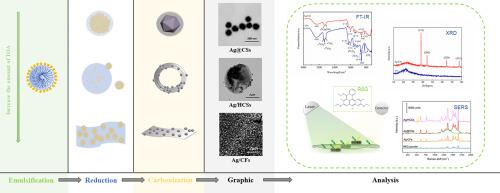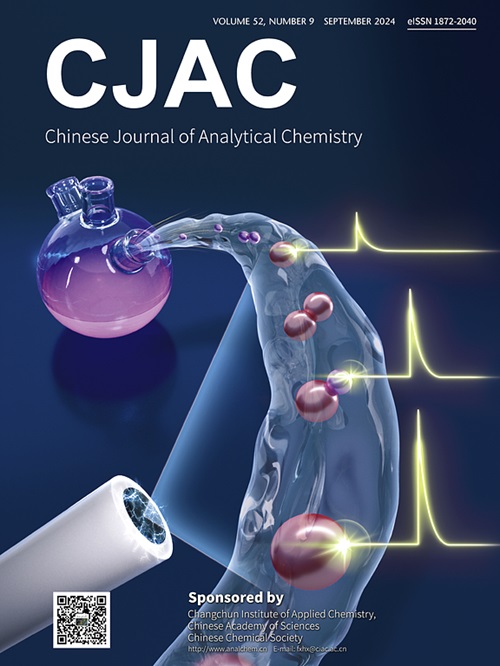Preparation and characterization of silver-carbon composite semitransparent hollow microspheres for surface-enhanced Raman scattering
Abstract
In this work, silver-carbon composite semitransparent hollow spheres (Ag/HCSs) have been successfully synthesized via hydrothermal carbonization (HTC) with trioctylamine (TOA) as a stabilizer and soft template. Furthermore, silver-carbon composites with core-shell structure (Ag@CSs) and carbon films loaded with silver nanoparticles composites with lamellar structure (Ag/CFs) were prepared by adjusting the amount of TOA. The Ag/HCSs were composed of a matrix of ultrathin translucent hydrothermal hollow carbon microspheres with Ag nanoclusters embedded, and numbers of Ag@CSs inside and outside of the hollow carbon microspheres. We further investigated the growth mechanism and morphology evolution, on the basis of the properties of Ag and HCSs, explored the application of the Ag/HCSs for surface-enhanced Raman scattering (SERS). SERS activity was investigated using Rhodamine 6 G (R6G) and crystal violet (CV) as the SERS probe molecules. Ag/HCSs exhibit the best SERS performance among three products. The semitranslucent carbon shell, localized surface plasmon resonances of AgNPs and the effect of charge transfer arising from oxygen-containing moieties make the Ag/HCSs to exhibit good SERS performance, which may give a little inspiration to prepare novel SERS substrates.


 求助内容:
求助内容: 应助结果提醒方式:
应助结果提醒方式:


